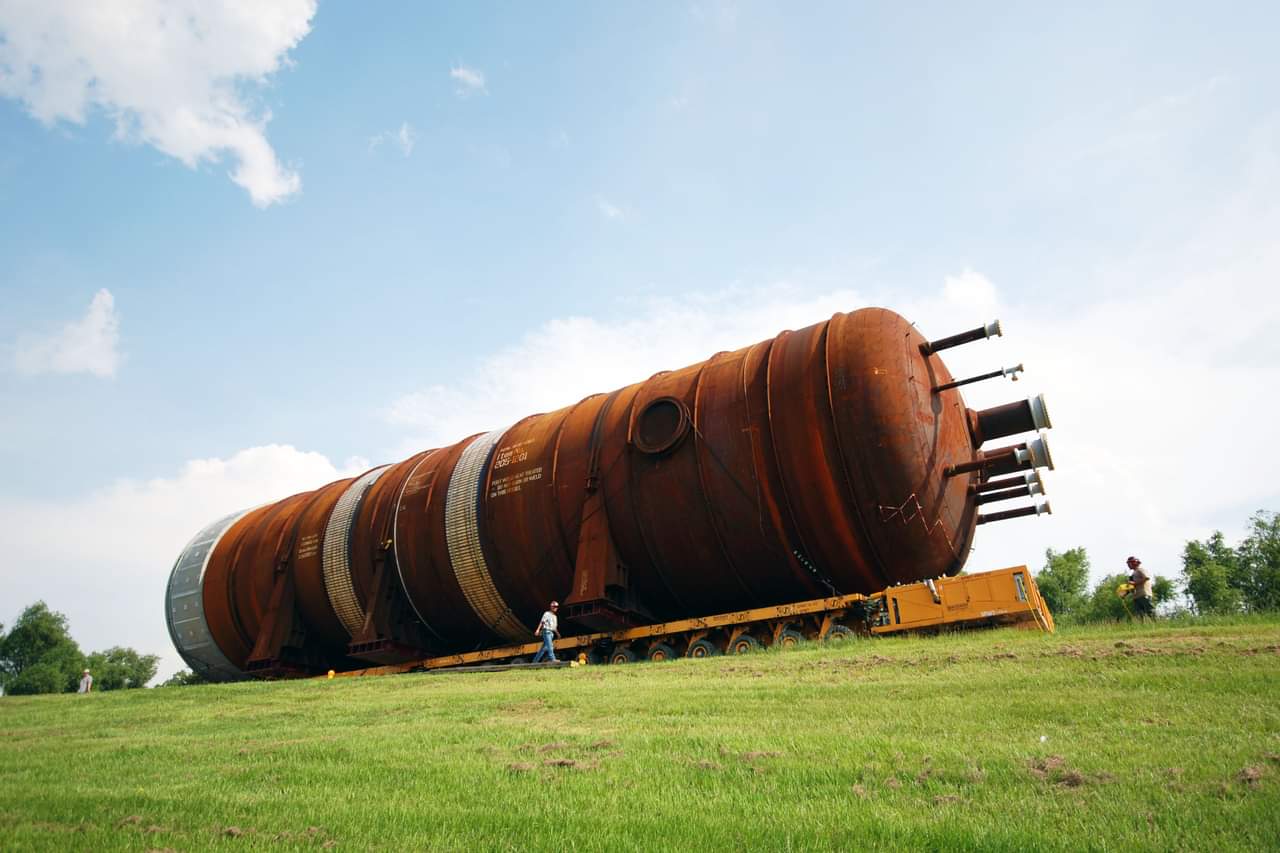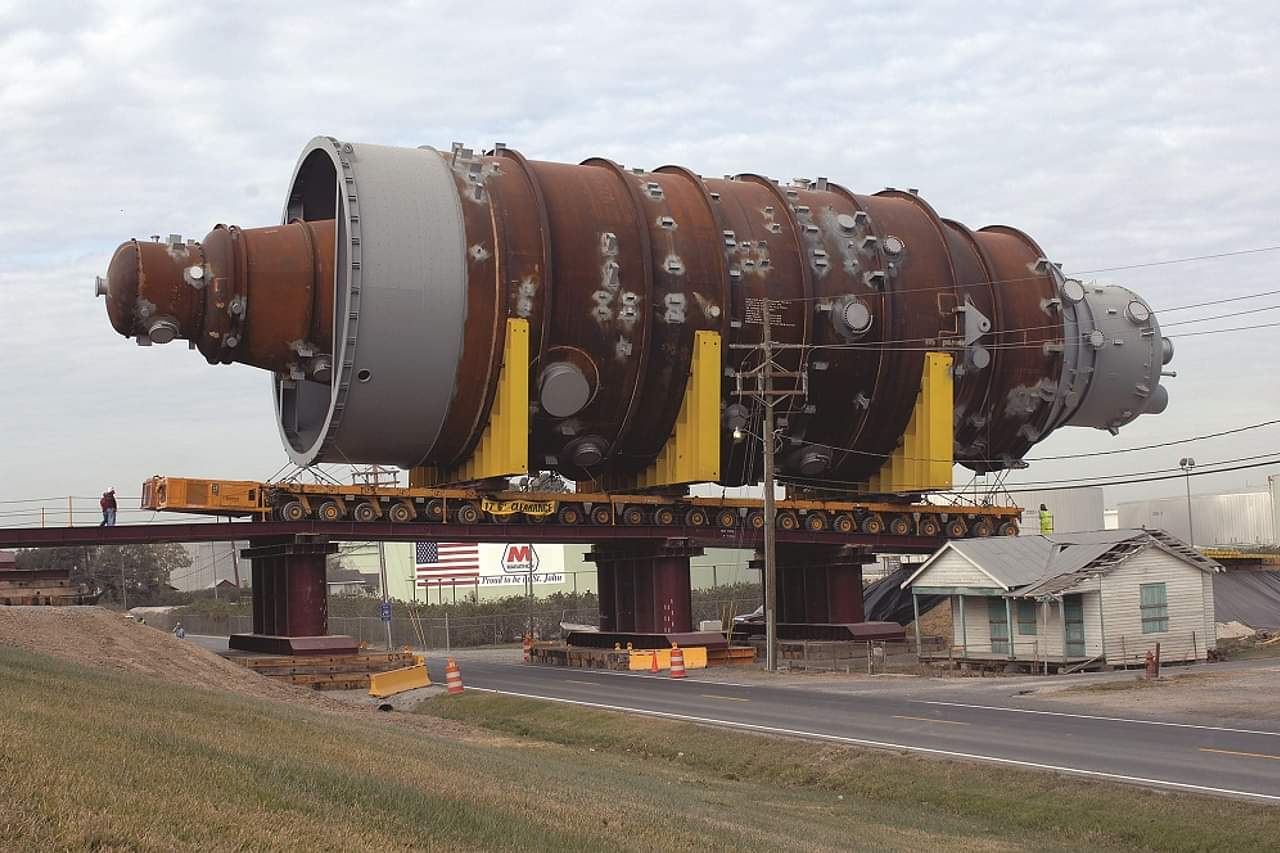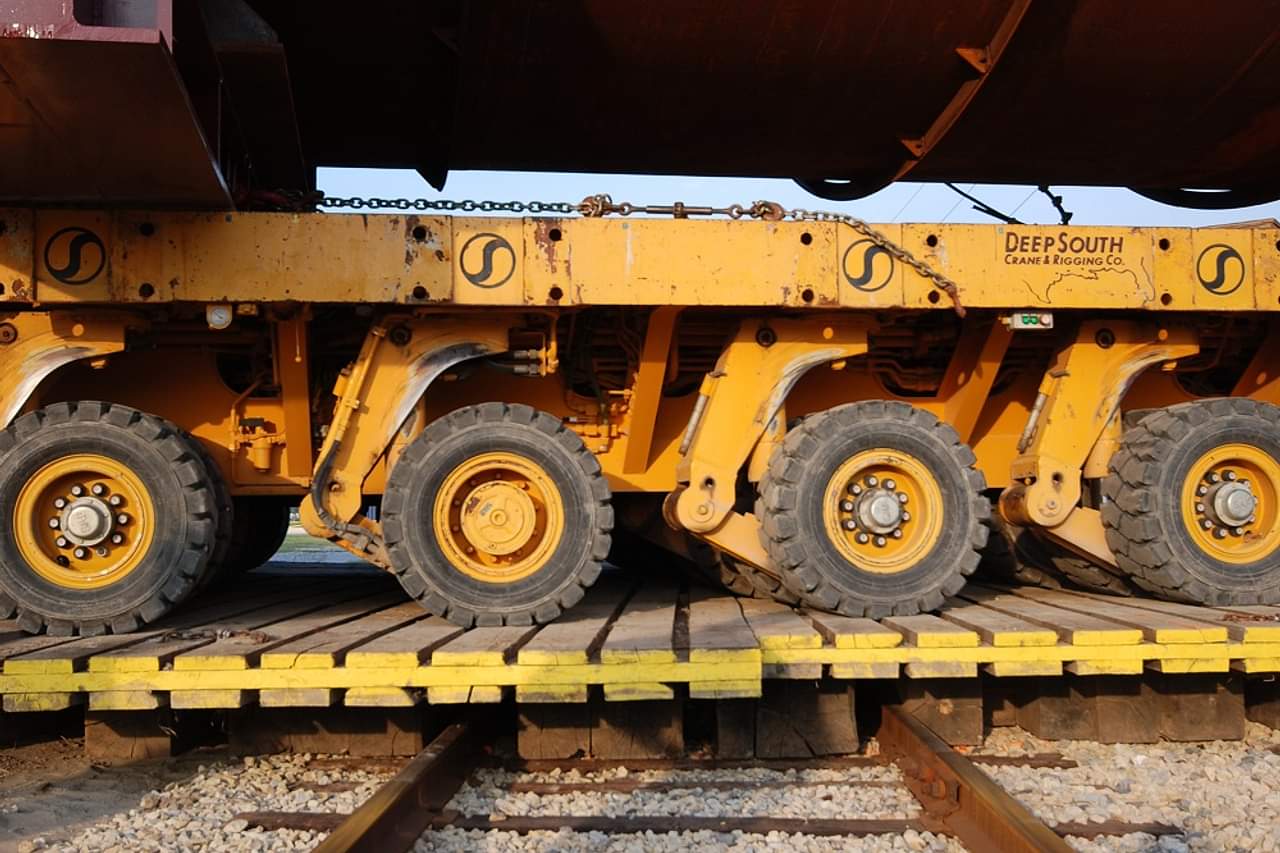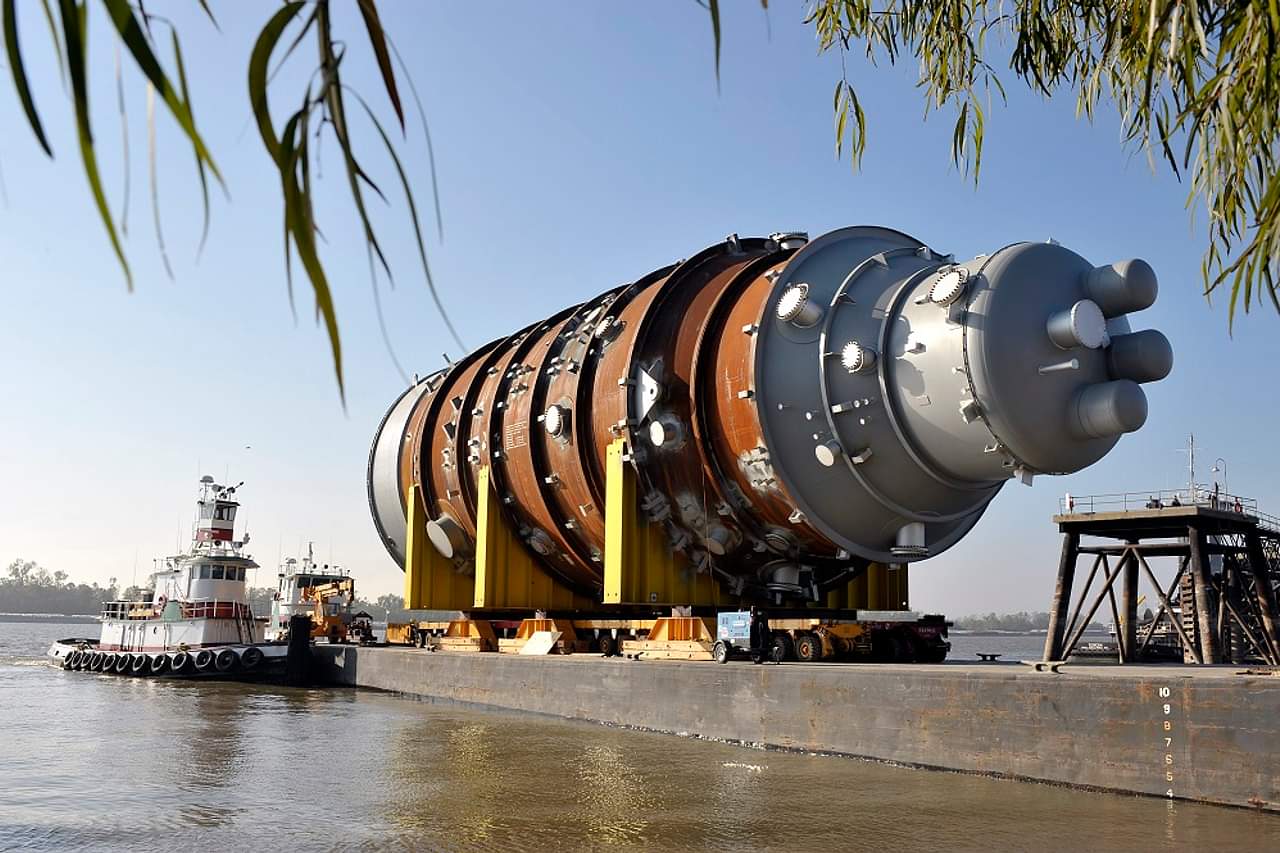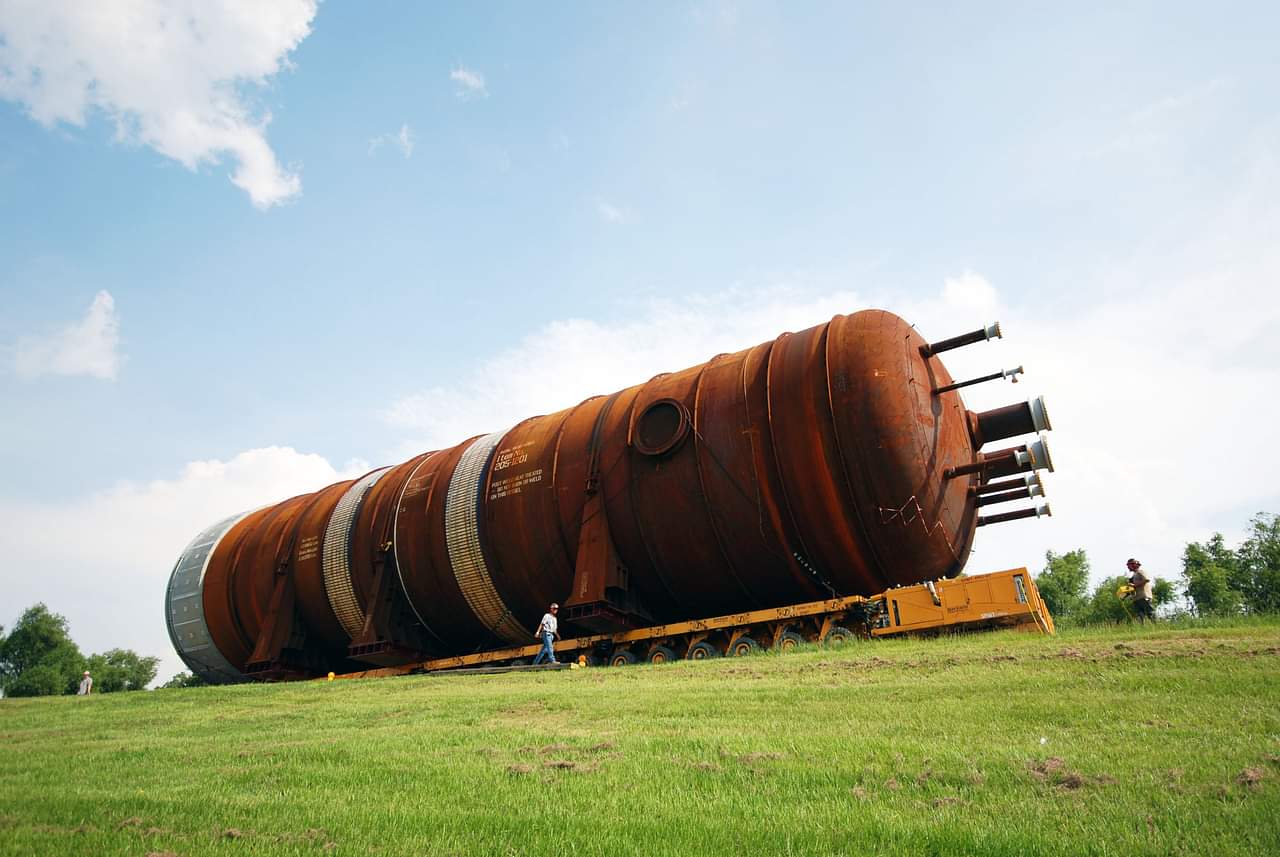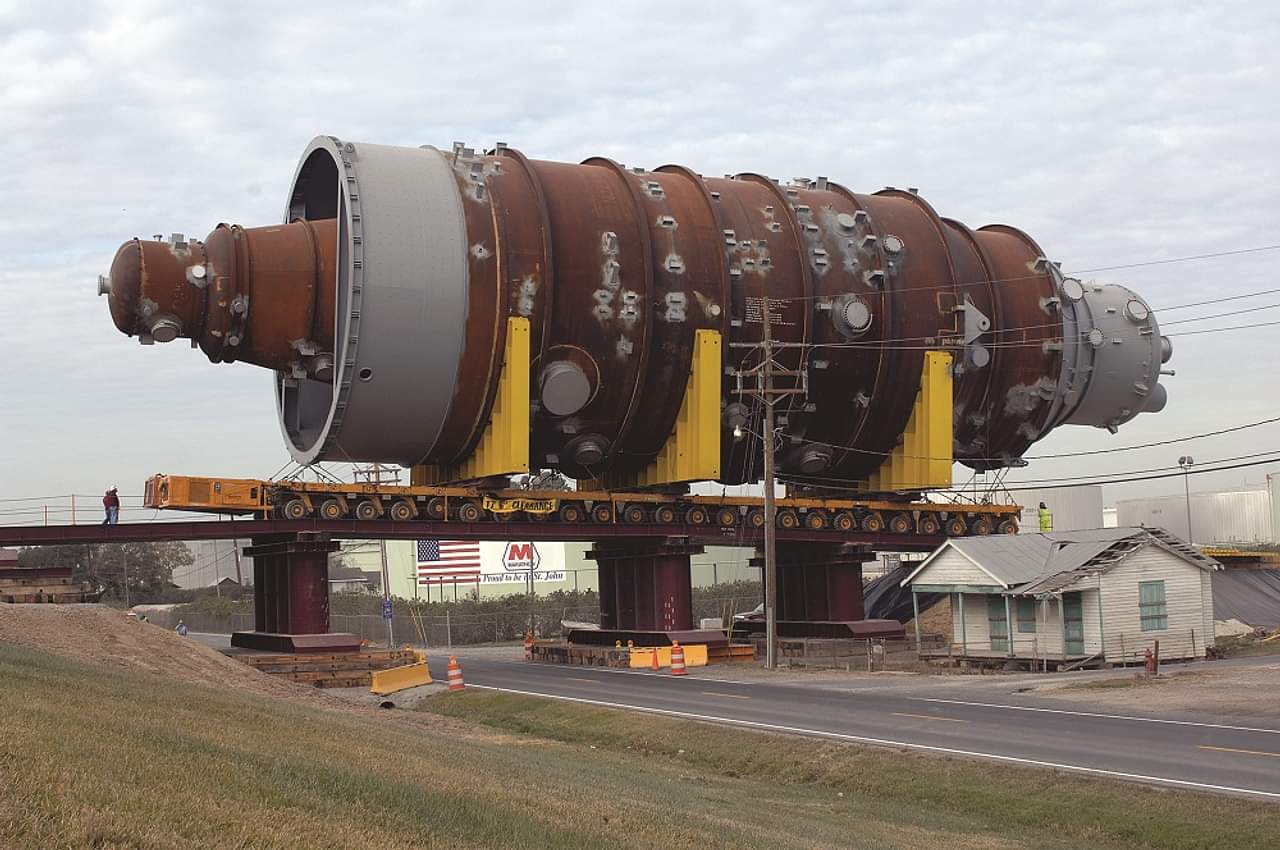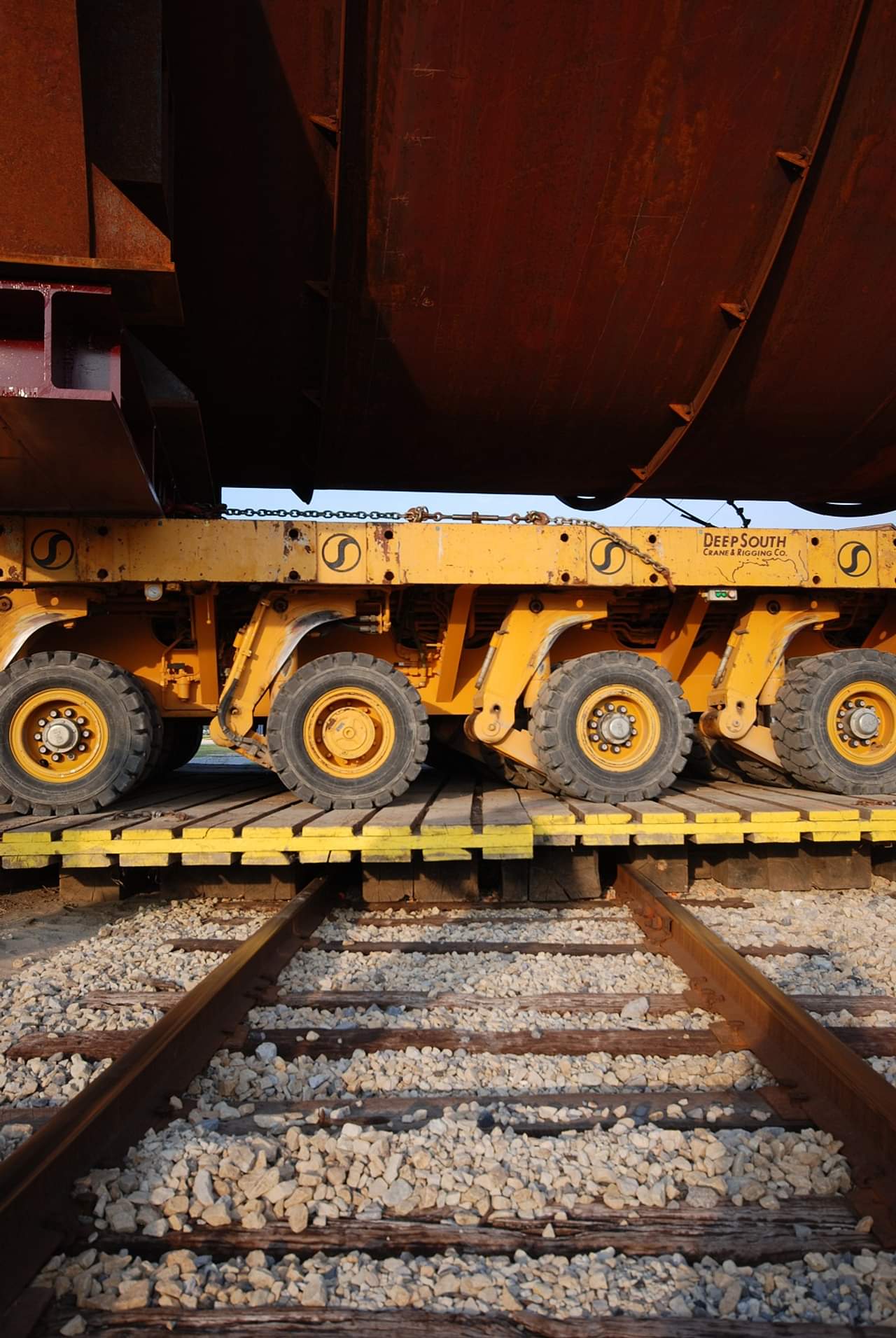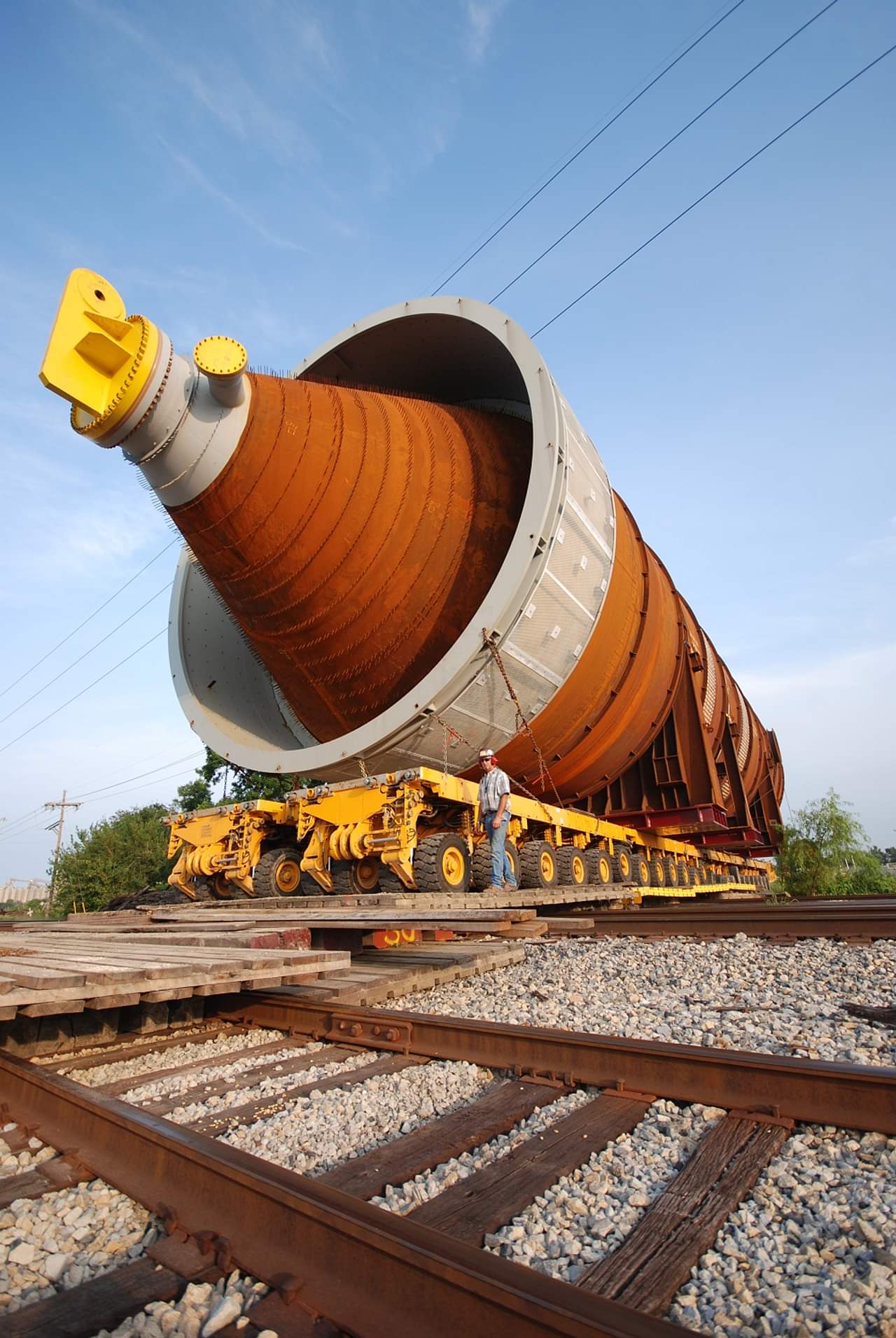A Marathon Job, Literally
As seen in American Cranes and Transport magazine.
-
Equipment Used
-
Services Used

Transforming a 200-acre sugarcane field in Garyville, LA into a state-of-the-art refinery required a $3.8 billion investment and the work of a cadre of contractors with expertise that spanned the entire spectrum of engineering, construction, and rigging. Construction on the Marathon GME project started in March of 2007, and by December of 2009 the refinery was mechanically complete.
As one would expect, the heavy lift requirements of the job were incredible. Deep South Crane and Rigging, based in Baton Rouge, LA, was awarded the heavy lift and heavy haul contract for the project. Deep South's contract included:
- Setting all vessels that weighed more than 75 tons
- Unloading all ships and barges and vessels arriving by truck
- Hauling vessels to crane hooks
- Supplying mats or ground-stabilization materials as required
- Supplying rigging hardware
- Providing solutions for crossing the levee and railroad tracks
- Supplying stands and beams for vessels to dressed out on
First and foremost, Deep South focused on safely completing all the tasks required. Each day Deep South's safety team assured task-specific JSA's, tool box topics, P.E. stamped lift plans, pre-lift meetings, outrigger loading tests, certified weights, and certified rigging.
During the project, Deep South had as many as 125 employees on the job. The company logged approximately 375,000 man hours and set more than 200 pieces of equipment. (The project lasted 2 years, but Deep South's scope of work spanned about a year.)
Ship Offloading
At the beginning of the project, much of Deep South's work involved offloading ships that arrived with project cargo. For these tasks, crews would meet up alongside the ship with a pre-dressed barge at the Port of New Orleans, according to Jeremy Landry, who works in the projects and estimating department for Deep South. He and his grandfather Camile Landry (who founded the company in 1968) co-managed the Marathon project.
"We would receive the cargo, secure vessels according to a third-party marine surveyor, then barge equipment to the barge site," says Jeremy Landry. "The barge site was located on the back side of the Mississippi River levee directly south of the refinery. Once the barge arrived we would unload its cargo using specialized self-propelled modular trailers (SPMT)".
Bridging the Gap
Items would travel up the back side of the levee using an earthen ramp, cross a 190 foot long fabricated bridge, cross a three-wide set of main line rail road tracks and then onto their designated staging area. The complete trek was roughly two miles.
"During the barging operation we faced a continuous battle with the river fluctuation level," says Landry. "Over the 10-month barging operation, the river fluctuated 21 feet. Despite this constant conflict we successfully unloaded 47 barge loads of arriving equipment."
Deep South handled all logistics of ships and barges bringing materials to the site. Among the most challenging projects to complete was the engineering, fabrication, and construction of a 190-foot long bridge to meet the Army Corps. of Engineer's levee crossing criteria. This structure met all requirements including the 1100 PSF allowable ground bearing criteria.
"The bridge was engineered by our P.E. staff using 3D modeling and stress analysis programs," says Landry. "It had a maximum clear span of 50 feet and was designed for a maximum intended load of 2,235,000 pounds. We tested the bridge prior to use, using SPMT's loaded with counterweight. Compacted clay was used to build the earthen ramps and levee slope support."
When moving materials and vessels across the bridge, Deep South coordinated with state and local police for safe crossing windows. The Deep South team also had to assure no environmental impacts from all the equipment working near the river and that the refinery's local neighbors were not disturbed. Additional environmental challenges were that there was no damage to root structures already embedded in the levee and that the site was returned to original condition upon completion. Deep South hauled all the equipment with no accidents or injuries.
Heavy, Heavy Lifts
The heavy lift jobs were tedious and required expert engineering and crane operating skills. Six 890-ton HCU reactors were set by Deep South's 2,500-ton capacity VersaCrane TC-36000 using 420 feet of main boom and 2,600 kips of superlift counterweight. The total weight of the crane plus the weight of the HCU Reactor was 5,430,000 pounds.
"Using our unique distribution system, we were able to stay underneath the site allowable of 2,400 PSF," says Landry. "These were set over the top of 120 feet of structural steel."
Setting a 500-ton crude column was another test. The crude column was 24 feet in diameter and 225 fee long. The crude column was set by the VersaCrane TC-36000 as well, using 420 feet of main boom and 1,672 kips of superlift counterweight. The column was tailed using a 750-ton capacity VersaCrane CC-9600, which had to crawl about 150 feet.
The HCU main fractionator was 19 feet in diameter and 215 feet long, and it weighed 487 tons.
This giant piece of equipment was set by the VersaCrane TC-36000 and tailed with the 450-ton capacity Demag CC-2400. The TC-36000 was rigged with 360 feet of main boom with 1,881 kips of superlift counterweight. Set radius was 160 feet.
"While setup in this spot, we were able to set seven other vessels," says Landry. "We set a 210-ton Naphtha splitter at 265 foot radius."
A 300-ton sour water stripper, measuring 12 feet in diameter and 165 feet long, was set using the 750-ton capacity VersaCrane CC-9600 and tailed with the 275-ton capacity Demag CC-1400. The CC-9600 was rigged with 260 feet of main boom with 740 kips of hinge counterweight. Set radius was 70 feet and tail swing radius was only 38 feet.
The 363 ton CCR reactor, which measured 12 feet in diameter and 220 feet long, was set by the 1,800 ton capacity VersaCrane TC-28000. The tailing crane was the 750-ton capacity VersaCrane CC-9600. The TC-28000 was rigged with 363 feet of main boom with 1,200 kips of superlift counterweight to set the vessel at a 120 foot radius. The TC-28000 was able to set several other items while setup to lift the reactor.
The 730-ton vacuum tower, which was 48 feet in diameter and 160 feet long, was set by VersaCrane TC-36000 using 360 feet of main boom and 1,881 kips of superlift counterweight. Set radius was 120 feet. The tower was tailed using the VersaCrane CC-9600. "This vessel was the second largest shop fabricated vessel ever built," says Landry. "We actually set the largest on another project using the same crane."
The coke drums, which measured 30 feet in diameter and 190 feet long, were set by the VersaCrane TC-36000 using 420 feet main boom and 1,463 kips of superlift counterweight. The set radius was 122 feet. The drums were tailed using the VersaCrane CC-9600. The TC-36000 was also used to set the structure and derrick towers, which required a boom increase to 450 feet.
Related Projects

Extreme Circumstances Call for Extreme Measures: A Narrow Canal Requires a Side Roll-Off
View Project
Extreme Circumstances Call for Extreme Measures: A Narrow Canal Requires a Side Roll-Off
Deep South was contracted to deliver a 750,000-pound reactor to a refinery in northern Illinois. The navigable waterway, a highly-trafficked 125-foot wide canal, required a side roll-off.

Specialty Ramps Save Client Money
View Project
Specialty Ramps Save Client Money
Our Demag CC-6800 set 4 vessels into final position, traveling with the full load on the hook and utilizing Deep South’s specialty ramps.
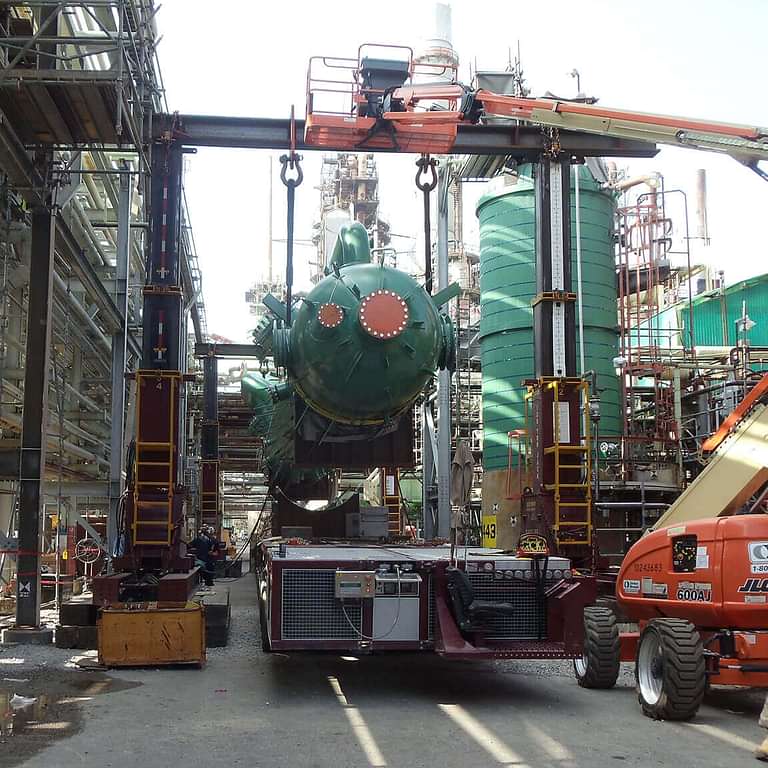
Tight Tailswing, Turnkey Solution
View Project
Tight Tailswing, Turnkey Solution
In the Southeast, Deep South performed a complex turnkey project that required equipment modification and careful planning.
